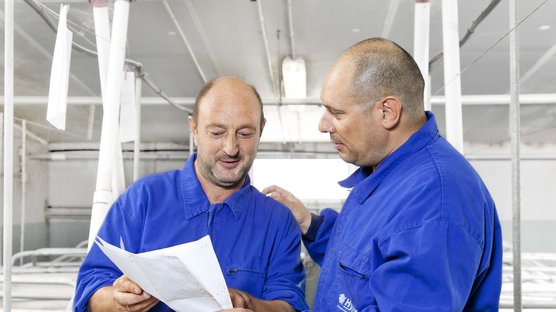
Published on Feb. 24, 2021
Transitioning from balanced breeding to sustainable breeding
Balanced breeding focuses on balancing the progress of many traits to generate profitability for the total pork supply system. These traits can be classified into (re)production and efficiency traits, and with increasing attention more recently, into animal health and welfare traits. After decades of focusing on balanced breeding, we have reached a new era: the era where we transition from balanced breeding to sustainable breeding.
The focus on balanced breeding objectives is a bigger challenge as economic, social, and environmental aspects come into play. Hendrix Genetics wants to pave the way towards a more sustainable pork industry. As a global leader, we want to set the standards on economic, social, and environmental sustainability. This evolution is more important than ever.
Economics are the cornerstone
For a sound pork sector and as a driving factor in every production phase, economics is very important. The genetic progress we aim to deliver with our Hypor sows, piglets, finishers, and pork, creates economic returns for the entire pork chain. Our breeding philosophy starts with a calm, (feed) efficient sow, that is easy to manage and with the capacity to wean her own piglets, all in a longer reproductive life. Farm labor is a scarce resource and should not need to be used on tasks that a sow, selected for self-reliance, can perform. Part of self-reliance is having a sow with the right number of teats, providing her offspring with quality colostrum and milk to keep them strong and healthy.
Economics also come into play when selecting for piglets with high birth weights and low variation. Research supports that a piglet of 1.5 kg/3.3 lbs. compared to 1 kg/2.2 lbs. piglet will deliver 121% more profit due to higher survivability, growth, and more full value finishers going to the packer. Breeding for uniform finishers with strong growth and sustainable feed conversion in our sire– and dam – lines deliver full value from wean to the finish line. Our goal is to hit the sweet spot on the grid through excellent carcass characteristics. High yield, low drip loss, the right level of muscle depth, fat depth, and meat with the desired color and marbling for any market.
Selection for social sustainability
By selection for self-reliant animals that thrive in all environments, we simultaneously set new standards on social sustainability. Animals that can take care of themselves, without intervention or support, are a distinguished component of social agricultural development. This includes sows that perform well in any housing system while we move to free gestation and free farrowing systems in the years to come.
Viable piglets that have heavy and more uniform birth weights within a litter are more likely to survive. Fewer light weight pigs will lead to evenly matched competition for teats, less piglet management, cross-fostering, and caring for small piglets. All these factors result in happier, healthier pigs. On top of that, we are researching new genetic technologies to eliminate animal treatments like castration, as well as vision and sensor technologies to remove the need for tail-docking. In the end, delicious and nutritious pork is our ultimate promise to the consumer as sustainable breeding and husbandry practices gain further social acceptance.
Reducing our environmental footprint
Hendrix Genetics raises the bar on environmental sustainability. To reduce the industry’s footprint, introducing sustainable conversion ratio (SCR) is key. There is more to feed conversion than simply calculating feed volume against meat volume. In addition to generating genetic progress regarding feed conversion, we need to research the effects of emission reducing diets and alternative ingredients; both are needed to resolve the food-feed-fuel conflict.
Improving feed conversion is the most efficient way to reduce the environmental impact of the pork sector. However, pigs are considered nature’s easy eaters, who have the potential to be used to reduce the amount of food that ends up as waste. When food and food by-products are thrown away, it’s not only food that is being wasted but also the land, labor, water, and nutrients that were invested in growing it. A more sustainable way to measure feed conversion is by adding the environmental impact into the ratio and switch to SCR.
A new era has begun. Setting the standard is our contribution to Better breeding today for a brighter life tomorrow.



